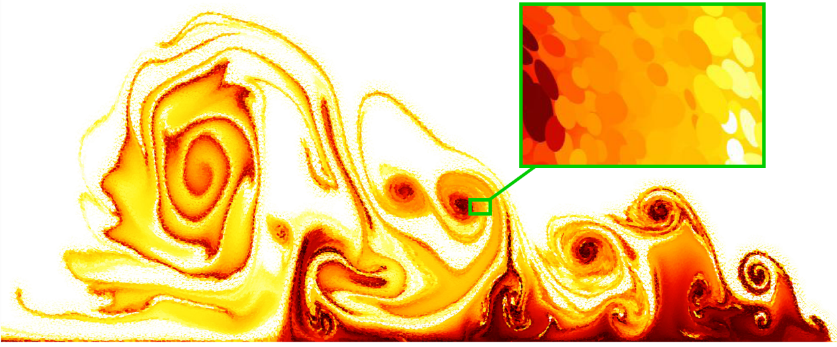A new Lagrangian approach to modelling density currents
- Academic lead
- Steven Böing, School of Earth and Environment, s.boeing@leeds.ac.uk
- Industrial lead
- Gabriel Rooney, Met Office, gabriel.rooney@metoffice.gov.uk
- Co-supervisor(s)
- Andrew Ross, School of Earth and Environment, a.n.ross@leeds.ac.uk, Onno Bokhove, School of Mathematics, o.bokhove@leeds.ac.uk
- Project themes
- Geophysical and Astrophysical Flows, Underpinning Methods for Fluid Dynamics
This project will use the Ellipsoidal Parcel-in-Cell (EPIC) model to study the fluid dynamics of density currents (also known as gravity currents). EPIC provides a revolutionary approach to fluid dynamics: rather than modelling the flow on a grid, EPIC represents the fluid as a collection of ellipsoidal parcels. This approach is unique in the atmospheric community, and allows us to model turbulent flows in detail using a fluid-following (Lagrangian) framework.
Density currents are poorly represented in global weather and climate models, where the cloud and rainfall processes that cause them aren’t explicitly represented. The role of density currents in triggering new clouds is particularly important. The Met Office has recently developed a method to embed the formation and propagation of density currents into global models, and first results show this provides a large improvement in the timing of precipitation. This project will inform the development of such methods, as more work is needed to explore how triggering of convection by density currents depends on environmental conditions, including wind shear.
EPIC’s Lagrangian framework will be ideally suited to study the circulations around the density current front and the behaviour of parcels above the density current that are lifted by its passage.
 A two-dimensional EPIC simulation of a density current.
A two-dimensional EPIC simulation of a density current.
